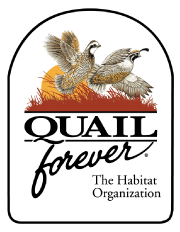General Resources and Publications
In the working lands library, you will find project reports, presentations, peer-reviewed studies, and more.
Evaluating artificial shelter arrays as a minimally invasive monitoring tool for the hellbender (Cryptobranchus alleganiensis)
Hellbenders Cryptobranchus alleganiensis are critically imperiled amphibians throughout the eastern USA. Rock-lifting is widely used to monitor hellbenders but can severely disturb habitat. We asked whether artificial shelter occupancy (the proportion of occupied shelters in an array) would function as a proxy for hellbender abundance and there by serve as a viable alternative to rock-lifting. We hypothesized that shelter occupancy would vary spatially in response to hellbender density, natural shelter density, or both, and would vary temporally with hellbender seasonal activity patterns and time since shelter deployment. We established shelter arrays (n = 30 shelters each) in 6 stream reaches and monitored them monthly for up to 2 yr. We used Bayesian mixed logistic regression and model ranking criteria to assess support for hypotheses concerning drivers of shelter occupancy. In all reaches, shelter occupancy was highest from June–August each year and was higher in Year 2 relative to Year 1. Our best-supported model indicated that the extent of boulder and bedrock (hereafter, natural shelter) in a reach mediated the relationship between hellbender abundance and shelter occupancy. More explicitly, shelter occupancy was positively correlated with abundance when natural shelter covered <20% of a reach, but uncorrelated with abundance when natural shelter was more abundant. While shelter occupancy should not be used to infer variation in hellbender relative abundance when substrate composition varies among reaches, we showed that artificial shelters can function as valuable monitoring tools when reaches meet certain criteria, though regular shelter maintenance is critical.
Improving the Utility of Artificial Shelters for Monitoring Eastern Hellbender Salamanders (Cryptobranchus alleganienses alleganiensis)
Artificial shelters show great promise as novel, non-invasive tools for studying hellbenders, but their use thus far has faced several challenges. During initial trials in multiple river networks, artificial shelters routinely became blocked by sediment and dislodged during high stream discharge events, and were rarely used by hellbenders. We sought to determine whether these complications could be overcome via alternative shelter design, placement, and maintenance. Between 2013 and 2018, we deployed 438 artificial shelters of two different designs across ten stream reaches and three rivers in the upper Tennessee River Basin. We assessed evidence for several hypotheses, postulating broadly that the availability, stability, and use of artificial shelters by hellbenders would depend on how shelters were constructed, deployed, and/or maintained. We found that maintaining shelters at least once every 40 days limited sediment blockage, and building ~ 40 kg shelters with 3-4 cm thick walls and recessed lids improved their stability during high discharge events. Additionally, we found that hellbenders most frequently occupied and nested in artificial shelters when they were deployed in deeper (~50+ cm) portions of reaches with high adult hellbender densities. Our results suggest that artificial shelters can serve as effective tools for studying hellbenders when designed, deployed, and maintained with these advancements, but also highlight some limitations of their use.
Learn All About Hellbenders and Take a Tour
Do you know what a hellbender is or where they can be found? This live session will answer those questions for you, show you what they look like by taking you on a virtual tour, share where they live, what they like to eat and who their predators are.
Golden-winged Warbler Conservation Initiative Brochure
This printable brochure from the Golden-winged Warbler Working Group highlights research priorities as well as key management strategies for private landowners and public land managers.























